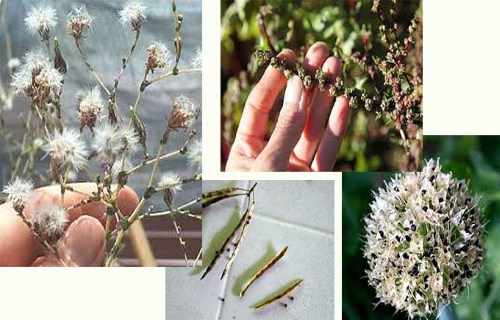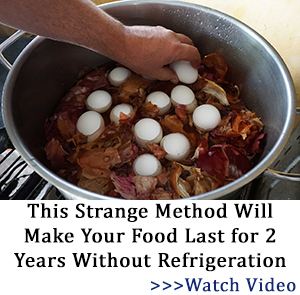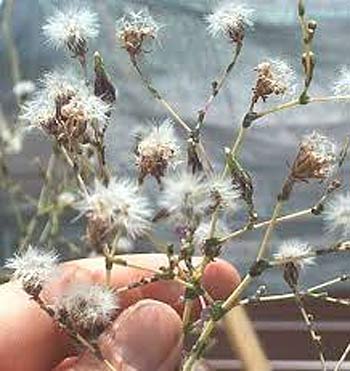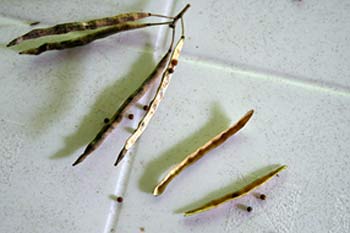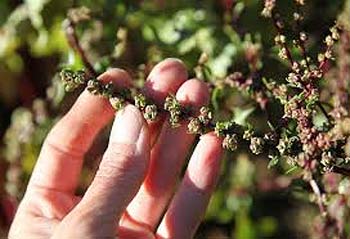Seed saving is not difficult. The hardest part of seed saving is knowing when and how the particular crop produces seeds.
Some seed in the spring, some in the fall, some the 2nd year. Some have seed pods, some have fruit.
If seeds come from inside the edible fruit (like tomatoes, squash, and peaches), let one fruit ripen on the plant and harvest the seeds from that. This may seem like a no-brainer, but I’ve lost track of how many times someone’s said “Wait, I can plant that?” The fruit will have to be fully ripe, so don’t try saving seeds from a soft, “edible” squash, for example. Many varieties of squash will be so hard when they’re ripe you may end up breaking them open with a sledgehammer, but by the time a tomato is ready to eat the seeds are fully ripe and can be harvested. Viability goes down considerably if seeds are harvested too soon.
Mature and immature squash from the same plant:

It’s best to let the seed fruits dry on the plant. If that’s not possible, harvest them at peak maturity and let them continue to ripen in a protected place.
Carefully separate the seeds from the flesh, but don’t worry about the fragility of the seeds—these seeds WANT to survive, and they’re hardened for abuse. Many can travel through the digestive system of an animal and come out unharmed, so a strainer and kitchen sink aren’t going to hurt them. If they seem unnecessarily fragile, you may have harvested too soon.
Clean and dry your seeds. They must be completely dry or you’ll get mold in storage. Some seeds, such as tomatoes, have a protective layer over the seed that keeps them from germinating, so cleaning is especially important with these. Keep your seeds in a cool, dry place to plant the next spring.
Harvest seeds from the best. Part of seed saving is making sure that your plants fill your needs for the foreseeable future, and not just for today, so you want to save the seeds that will pass on the best traits. Lack of pollination and insect damage aren’t desirable traits.
If you like the taste of one plant over another make that your seed plant. Mark it so you don’t accidentally harvest and eat your seeds. And yes, I have done that. ? If you really don’t like the taste of another, cull it. A little privation of your favorite flavors now will assure those flavors will be available in future years. If one plant wilts in the morning sun while another stays strong, cull the weak and do not save seeds from it. If one plant turns yellow or doesn’t thrive under your conditions, pull it.
If seed longevity is your goal (as it should be for long term survival), wait a few years before you plant to make sure you harvest only from seeds that have that trait. If you want drought tolerance, plant in dry conditions and harvest seeds from the best that survive. Over time you should get plants and fruit that best suit your needs.
Of course, this implies that no other pollen is getting into your seed plants. If you plant more than one variety of the same species (such as 2 different kinds of summer squash), they’ll cross and you may get a hybrid the next year. If this isn’t desirable, consider only planting one variety each year–even if they are biennials and seed the next spring, only one will seed at a time.
For further isolation, such as for plants that have been approved for genetic modification, I make small bags of light gauze and yarn to put over the flowers. When I isolate in this way I pollinate with a paintbrush so I have complete control over which plants cross.
SEED SAVING
The following is basic information for a few of the more common garden plants. Longevity relies on storage and growing conditions.
SQUASH / MELONS
Male and female squash blossoms:
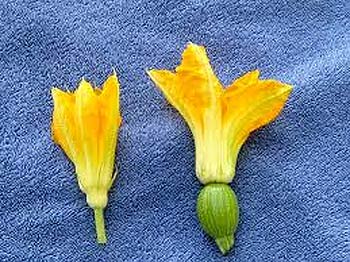
GRAINS
Mostly wind pollinated. If there are farmers in the area growing these you may not be able to get pure seed. Depending on variety and conditions, pollen can travel as much as 5 miles. Corn pollen travels less than 100 feet under normal conditions but has been known to travel further with wind. Seeds will last indefinitely.
Female flower of corn in the leaf axil:
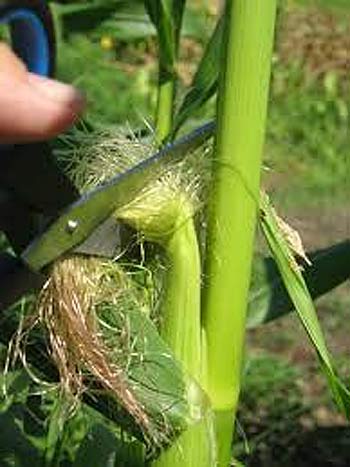
Male flower of corn, or tassels:
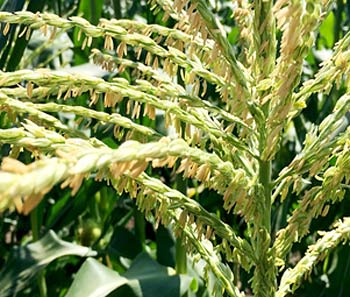
GREENS
Most will go to seed the same year. Spinach has male and female plants so you need both for seeds. Brassicas (kale, collards, broccoli, etc) will often not self-pollinate so you need at least two plants. Most are technically biennial, but may go to seed the first year. The broccoli you harvest is the immature flower head so you’ll need to let it go to get seeds. Seeds will last a minimum of 2 years, but I’ve seen them last upwards of ten without loss of viability.
ROOT CROPS
Beets and onions will “bolt” the second year and go to seed then. If you plant beets or onions for seed, put your seed plants in an area where they won’t be disturbed for two years. Depending on your conditions you may need to lift them and store until spring. Garlic does not seed easily and is propagated mostly through bulbs. Seeds will last a minimum of 2 years, but I’ve seen them last upwards of ten without loss of viability.
Alium (onion, garlic, leek, etc) seed head:

BEANS
May cross, but usually don’t. Let a few bushes go to seed and dry on the vine for seed next year. If seeds are small and shriveled they were harvested too early and might not germinate. Seeds will last between five and ten years. If you can cook the bean, you can probably grow it.
TOMATOES
May cross, but it’s unlikely. Keep seeds from those you harvest to eat. Seeds will last about five years.
PEPPERS
If you grow more than one variety they’ll need to be separated by ten feet or more to get pure seed. Otherwise just let a few dry on the vine. Seeds will last at least three years.
PEAS
Choose the best plants [full pods, best taste] and let the peas dry on the vine. Watch out for pea weevil, as the larvae eats the seeds from the inside. Seeds will last about five years.
Books can be your best pre-collapse investment.
Old Time Wisdom ( Timeless Bits of Wisdom on How to Grow Everything Organically, from the Good Old Days When Everyone Did you can prepare yourself for war by moving to the countryside and building a farm, but you must take guns with you, as the hordes of starving will be roaming. Also, even though the elite will have their safe havens and specialist shelters, they must be just as careful during the war as the ordinary civilians, because their shelters can still be compromised.”)
The Lost Ways (Learn the long forgotten secrets that helped our forefathers survive famines,wars,economic crisis and anything else life threw at them)
LOST WAYS 2 ( Word of the day: Prepare! And do it the old fashion way, like our fore-fathers did it and succeed long before us, because what lies ahead of us will require all the help we can get. Watch this video and learn the 3 skills that ensured our ancestors survival in hard times of famine and war.)
SOURCE : modernsurvivalblog.com

